A searing hot day greeted us together with yet another visit first thing to the Kerman motor mechanics' shop. We were beginning to know them by first name. They became gods this day, fixing the air conditioning problem in Mohammad's car in just a very short time. One of the mechanics spoke very good English and came over to talk with us. He asked if we had a President in our country. "No", we replied. "We do have a Prime Minister though".The mechanic asked what his name was. We replied that Julia Gillard was our PM. "Never heard of him" the mechanic muttered. "But I do know of Skippy the Kangaroo. Skippy must be more famous than your Prime Minister". It was probably true. We didn't add that our Julia is female.
A scorching hot road swept us from Kerman toward the central Iranian city of Yazd. We were so relieved that we had air conditioning and for me, that Alan had swapped places so I could travel in the front seat of the car. Even with the air conditioning on full pace, like most cars, the venting system was not very efficient and the back seat was suffocatingly hot. It did not help my pre-disposition to car sickness - which by this time I didn't dare to admit.
We drove through the same highway as we had entered Kerman. Extensive green acres of underground irrigated pistachio orchards dominated the countryside before we entered the usual flat desertscape of the outer areas of Kerman city. Desert vegetation now comprised "Gaz" or the desert tamarisk and plantations of irrigated White Cedar established to minimise sand storms and sand movement, lined the highway. Townships such as Rafsanjan passed us by. Toward the township of Anar, the countryside was covered by pomegranate orchards.
Mohammad explained that often people are named after the village or township they come from. And so Hoj-jat-ol-Eslam Rafsanjani who was President of Iran during the 1990's was indeed from the town of Rafsanjan. Likewise the late Supreme Leader, the Ayatollah Ruhollah Khomeini was from Khomein.
Massive electricity generators and huge cement works dominated the otherwise desolate dead flat desert scenery. Endless power cables dissected a cloudless white hot sky. Poor small villages punctuated the desert highway, their drab ochre domed adobe houses built from local mud bricks and clay. I was fascinated with the Persian Farsi script that was so often slapped onto the village walls. How could anyone decipher what was written in those unbelievably long sausage shaped scrolls? I was proud of myself being able to recognise the Farsi numeric script but I had absolutely no inkling what the alpha bits were. I was particularly interested in the very, very long scripts that were painted like bright coloured graffiti on low, long mud brick walls. I asked Mohammad what was the special meaning of these VERY long scripts. He laughed, saying they were only long to fill the space of the wall and so looked nice as an advertisement. Nothing as deep and meaningful and I had thought....
We were also interested in the Iranian "borrowing" of words from other countries. Mohammad always said "merci" for thank you and he called the highways "autobarns". The same of course applies in our own country. For some reason, it was a bit of a surprise in Iran. Mohammad in one of his many snippets of information told us that Yazd and Venice are Sister Cities. We could not see the connection. "Well, Yazd is desert and Venice is water", Mohammad explained. Well, yes...
We were entering serious desert country. Here there was absolutely no vegetation, just flat cream-white sand. A dust storm loomed against a lunar landscape. In the distance the skyline was rimmed with beautiful mountains. Some of the land formations in Iran were simply magnificent. An artist's palate of colours and a geologist's dream of fascinating but bizarre rocky outcrops.
We were in the protected zone for the Asiatic Puma and the Zebra but not one was to be seen. "Watch out for Camels" signs were everywhere but again, no camels. Goodness knows what they would eat anyway. There was nothing growing at all.
Some three and a half hour's drive from Kerman we arrived at a curious old caravanserai, the Zein-o-din Robat. Built by order of Shah Abbas I (1587-1629) in the early 1600's, the old caravanserai has been beautifully restored to its former glory and is now used as a hotel. For such a touristy place, the hotel was quite beautiful and gave us a real appreciation of what the old caravanserais looked like and how they functioned. Rooms were curtained off from the wandering corridors and beds were carpeted platforms over raised brick floors.
The dining area was lovely and where we enjoyed a welcome break and tea. And the toilets were for a change spotless. Unfortunately, a large tourist group was following us and so we could only spend a short time enjoying our tea before - yes - once again we were speedily carted off again on our tour.
Just before we arrived at Yazd we visited the Dakhmeh-ye Zartoshtiyun - or The Towers of Silence. Two eerie, lonely barren hilltops mark the site where the dead were once taken to their final resting place. It was very reminiscent of our visit to the so called Sacred Mountains in Tibet in 2007 where the dead were disposed of, not by burial but by being left to the vultures. In Iran, however, the practice is not in accordance with the Buddhism religion but with the Zoroastrian beliefs in the purity of the earth.
In the uncovered stone chamber at the top of the hills, the bodies were left in an upright position bound to sticks for the vultures to pick clean. The story is rather gross. A Zoroastrian priest would sit with the bodies to observe which eye was plucked out first by the vultures. If it was the right eye, then the future of the soul would be good. Conversely, if it was the left eye, then the future was looking pretty shaky. The principles here however are much the same as that in Tibet. In such a dry environment, it would be extremely difficult to dispose of the dead. Not only would burial be difficult but decay would be almost non-existent.
Apparently, these towers have not been used since the 1960's mostly because of hygiene reasons. The vultures were blamed for contaminating local water holes - an accusation which is fully understandable given their former role in life.
The site was rather fascinating. Old disused buildings, wells and a water cistern still remain at the base of the towers and the atmosphere was truly haunting. Perhaps we just had good imaginations.... We spent some time walking around the old ruins before embarking on the long hot climb up to one of the towers. At the top was a crater-like chamber which once housed the bodies of the dead. It was not a place we felt at home in so we hastily decided to walk back down to the car.
The descent was particularly steep and we really had to work hard not to skid down on our bottoms. Our journey was suddenly broken by anguished voices crying for help. The voices of the dead? No, they were the concerned voices of two tourists who had lost their way and were unable to find the right trails to descend from the towers. Looking up from the base of the tower, we could see their plight. Every trail they embarked on came to a death defying cliff edge. Mohammad tried to give them instructions, presumably in Farsi. It didn't help as they obviously could not understand him. In desperation, he asked if they could speak English. They could, and he assisted them in finding their way down. We were amazed how easy it was for people to get so badly lost on such a barren hillside. They were more than appreciative.
Mohammad insisted that we visit the modern Zoroastrian cemetery nearby. It was a bit hard to get too enthusiastic about a series of graves looking much like our own Australian cemeteries but we did our best to look interested.
It was a stiflingly hot and still afternoon but on our way out a huge gust of wind came from seemingly nowhere and swept across the grave sites. And then there was nothing. No wind. No sounds. "Do you believe in ghosts?" Mohammad asked. We said nothing but kept walking steadily back to the car. I felt chills run down my spine.
Mohammad told us that he loved Yazd. He said he could easily live there. Looking down from the barren Towers of Silence onto the distant essentially brown city sandwiched between the northern scorched Dashte-e Kavir and the southern Dashte-e Lut Deserts, I wondered why anyone would like such a hostile and boring looking place. Yazd is known as the City of Hard Workers and on entering the outskirts of the city you could well understand why. City outskirts are never pretty places but Yazd was sobering. Old truck bodies lay in wreckage, decaying slowly under a torturous hot sky. Once again poor roller-shutted motor mechanics' shops dominated the local industry. People certainly looked like they worked hard. Alan noticed with interest that one of the food shops was bizarrely called the "Geisha Pizza Bar".
Entering the shimmering desert city of Yazd I mused that it reminded me of the lyrics of the well known Eagles' song Hotel California:
"On a dark desert highway. Cool wind in my hair. Warm smells of colitas (cannabis), rising up through the air. Up ahead in the distance, I saw a shimmering light. My head grew heavy and my sight grew dim. I had to stop for the night. There she stood in the doorway; I heard the mission bell. And I was thinking to myself this could be heaven or this could be hell...." Welcome to the Hotel California. Such a lovely place, such a lovely place......"
Well, fortunately Yazd was a lovely city. Perhaps not quite heaven but definitely not hell. I think the colitas would be hard to find but the Yazd specialty of sohan (traditional toffee sweet) was very good.
Yazd is one of the oldest cities in the world, dating back to before 3,000 BC when it was part of the Medes Empire. For centuries it was an important staging post on the trading routes from central Asia and India. Fortunately for Yazd, its harsh desert environment actually protected it from invasion by major ancient armies, and it was also spared from the ravages of destruction by Genghis Khan and Tamerlane. The architecture and traditions in Yazd have therefore been left largely unchanged for centuries.
Home to a large Zoroastrian community, Yazd is an attractive city with leafy tree lined streets and a rather relaxed atmosphere. It is famous also for its ingenious "badgirs" or wind towers that are so characteristic of the Yazd architecture. The badgirs are designed to catch cool breezes while dispelling the hot air currents. The incoming air is further cooled by collection over a pool of water which acts somewhat like an evaporative cooler. In such a hot environment where summer temperatures can exceed 40 degrees C, the badgirs must be a god send.
Yazd is also the driest city in Iran and because of its climate, has one of the largest networks of irrigation and water storage in the world. These are a combination of wells and underground water channels - or qanats - that allow for water transportation with minimal evaporation.
We only had one day in Yazd and it was jam packed with site visits. In hindsight we would have preferred to stay longer in this rather enchanting city. Our first sighting of the famous badgirs was at the Bagh-e Doulat Abad, once the residence of the former ruler Karim Khan Zand. The building, which was built around AD 1750 consists of a small pavilion set in a gorgeous quiet garden with a lovely rectangular pool. The ever popular water features in Yazd, and indeed all over Iran, gave a lovely cooling feel and a great atmosphere to the garden settings. The Bagh-e Doulat Abad badgir is the largest in the city at a height of some 33 meters. Inside the pavilion was decorated with exquisite stained glass windows and intricate lattice work.
Yazd was also our real introduction to the intriguing Zoroastrian religion. Zoroastrianism pre-dates Islam and was one of the first religions to postulate an omnipotent, invisible god who is represented by an "eternally" burning flame in Zoroastrian temples. The core principles of the religion are that of the conflicting Vohu Manu (Good Mind) and Ahem Nano (Bad Mind) which co-existed within the supreme being of Ahura Mazda. Interestingly, the Three Wise Men of the Christian Bible are believed to have been Zoroastrian magi. The winged "Faravahar" or guardian spirit, is the best known symbol of Zoroastrianism and is said to be a reminder of one's purpose in life - to live in a way that the soul progresses toward union with the Ahura Mazda.
The religion certainly has merit with it's three values of "Good Deeds", "Good Thoughts" and "Good Words" which are expressed in the layers of feathers on the Faravahar. Mohammad would remind us of these values on many occasions. He kindly gave me a lovely Faravahar ornament - I think just in case I forgot. The Faravahar values reminded me of an ornament my parents had many years ago which comprised three wise monkeys each with their hands over either their eyes, ears or mouths. The ornament was inscribed with "Hear no evil, See no evil and Speak no evil. I guess the ornament and its inscriptions was a variant of the Zoroastrian values.
Yazd is home to Iran's largest population of Zoroastrians and is a major pilgrimage site. It is estimated that around 5,500 worshippers live in Yazd today, although the population is said to be diminishing in light of increasing Islamic influence.
Our next Zoroastrian site after our visit to the Towers of Silence was the Ateshkadeh or Sacred Eternal Flame housed in the Fire Temple of Yazd. It is said that the fire has been kept alight since AD 470. The Fire Temple is an arched, rather majestic temple with a lovely oval reflecting pool in front of the building. When we visited, the temple was unfortunately jam packed with tourists, making it rather difficult to appreciate the significance of the site. It seemed that everyone was wanting to take a photo of the eternal flame, including me. I certainly do not take long to take a photo and I was surprised when I received a sharp prod in my back, accompanied by a heavy Germanic guttural growl "Other people want to take a photo too". A heavy gutted tourist with a camera of similar proportions pushed roughly in front of me. Needless to say, my photo was not a success. Sadly my Faravahar did not come to my rescue with my resulting Bad Thoughts and equally Bad Words....
Mohammad, the ultimate diplomat, hastily drove us to our next site visit, the Amir Chakhmaq Complex and the medieval Takyeh Amir Mosque. The facade of the Takyeh, a building used during rituals to commemorate the death of Imam Hossein, was attractive and rather unusual with its three tiers of sunken alcoves. Unfortunately, like many of the sites we visited, the facade was undergoing significant renovations and a lot of the front was was covered in scaffolding.
Deep in thought gazing at the facade, I was suddenly swamped by a group of raucous school girls wanting to have their photo taken with me. As mentioned, this had happened many times to us during our travels around Iran and by this time we were starting to feel like part of a freak show. I obliged, but insisted on taking their photo instead. And then a urgent yell from Mohammad "Wendy, Wendy - your head scarf, your head scarf!!!!!". Yes, well my head scarf had fallen off during the friendly mobbing and I was casually picking it up to tie it back on. But apparently I had not acted quickly enough. Mohammad was truly concerned for me and was frantically helping me put the wretched scarf back on again. It was obviously a very, very serious event to lose your head scarf, even accidentally. I did not ever come to terms with what to me, was such a seemingly minor occurrence and another grim reminder of just how rigid the rules were for women.
Our intensive tour of Yazd whizzed us on to Bogeh-ye Seyened Roknaddin - or Mausoleum of Seyed Roknaddin - with its beautiful blue-tiled dome, followed by a visit to Alexander's Prison. There is much conjecture as to whether the 15th Century domed school was indeed once a prison for Alexander the Great's captives but the dungeon itself did not look like a great place to hang out. Right next door to the so called prison is the Tomb of the 12 Imams who, for Shiites, are the direct descendants of the Prophet. I think we were rather "toured out" by this time to appreciate the visit. Anyway, none of the 12 Imams, is buried at the site.
After so many sites, an ice cream and a leisurely walk around the Old City of Yazd was much appreciated. The Old City was a labyrinth of fascinating and complex lanes with baked clay and brick high walls hiding a deceptive number of residential quarters. The distinctive badgirs arose from behind the biscuit coloured adobe buildings. The city looked deserted, the only sign of habitation being just ornate door knockers. There were two per house, one for males and the other for females. Your would have to be rather thick not to be able to work out which was which. Of course the door knockers provide the inhabitant of the house with identity of the gender of the person calling which is all important in such a gender divided country.
Some of the old city laneways were covered, obviously a cool retreat from the intense Yazd summer heat. The arched brick ceilings were rather lovely and provided a peaceful atmosphere for our casual meander through the old city.
It's hard to believe after the many sites we had visited, that we managed to fit in a visit to the Yazd Bazaar. The bazaar was lovely, lively and full of interesting gold and silver shops. But we were just too tired to bother shopping. Anyway, we had made an appointment we wanted to make before dinner.
Our friend Massoud, an Iranian born man now living in Sydney, Australia was excited about our coming trip to his homeland and very keen for us to visit his brother Amed and his family in Yazd. So, although we were dead tired, we knew that we had to keep this commitment. And we were really pleased that we did. Amed and his wife Farideh welcomed us with open arms into their basic but comfortable home in Yazd. Their daughters Laleh and Maliheh spoke excellent English and obligingly interpreted for us. Both daughters had achieved a high level of education. Laleh was studying agricultural science and Maliheh was a university lecturer in physics. The family's hospitality was overwhelming and what we had experienced so often in Iran. Plates of fresh water melon, sliced oranges and delicious sticky sweet pastries were brought out for us, with numerous cups of tea.
Massoud had told us beforehand that his brother was deeply religious. He explained that although he loved his sister-in-law Farideh as he would his own sister, he was as he said "never able to put his arm around her, let alone give her a (family) kiss". We knew that this troubled Massoud who was very at home with his family's free life in Sydney. And Farideh was the most lovely and warmest woman you would ever find. It troubled us too that even in her own home, when it was extremely hot and she was sweating profusely, because we were guests she had to be cloaked in a large choking chador. We often wondered why the Iranian women continue to put up with what is to us, such an absurd and unfair religious regulation. Fear of course, is the answer.
Yazd - Such a Lovely Place, Such a Lovely Place...
Wednesday, April 27, 2011
 Yazd, Yazd, Iran
Yazd, Yazd, Iran
Other Entries
-
2HISTORICAL TIMELINE
Apr 1116 days prior Crowdy Head, Australiaphoto_camera1videocam 0comment 0
Crowdy Head, Australiaphoto_camera1videocam 0comment 0 -
3Bon Voyage - or the Last Supper?
Apr 1116 days prior Crowdy Head, Australiaphoto_camera1videocam 0comment 0
Crowdy Head, Australiaphoto_camera1videocam 0comment 0 -
4Pssst - Most People in Western China are Muslim...
Apr 1116 days prior Sydney, Australiaphoto_camera3videocam 0comment 0
Sydney, Australiaphoto_camera3videocam 0comment 0 -
5Just a Fleeting Stay in Shanghai
Apr 1215 days prior Shanghai, Chinaphoto_camera2videocam 0comment 0
Shanghai, Chinaphoto_camera2videocam 0comment 0 -
6Back
Apr 1314 days prior Urumqi, Chinaphoto_camera4videocam 0comment 0
Urumqi, Chinaphoto_camera4videocam 0comment 0 -
7Everything is Grand and White in Ashgabat
Apr 1413 days prior Ashgabat, Turkmenistanphoto_camera18videocam 0comment 0
Ashgabat, Turkmenistanphoto_camera18videocam 0comment 0 -
8Ancient Gonur - Good Morning Mr Sarianidi!
Apr 1710 days prior Mary, Turkmenistanphoto_camera12videocam 0comment 0
Mary, Turkmenistanphoto_camera12videocam 0comment 0 -
9Stumbling Over the Border and Into Iran
Apr 189 days prior Mashad, Iranphoto_camera2videocam 0comment 0
Mashad, Iranphoto_camera2videocam 0comment 0 -
10Mashad - Our Confronting Introduction to Iran
Apr 189 days prior Mashad, Iranphoto_camera9videocam 0comment 0
Mashad, Iranphoto_camera9videocam 0comment 0 -
11Around Mashad - Mausoleums of Two Literary Giants
Apr 198 days prior Tehran, Iranphoto_camera7videocam 0comment 0
Tehran, Iranphoto_camera7videocam 0comment 0 -
12Tehran to Hamadan - So Dizi My Head is Spinning...
Apr 207 days prior Hamadan, Iranphoto_camera8videocam 0comment 0
Hamadan, Iranphoto_camera8videocam 0comment 0 -
13To Khorramabad: Connecting With the Archaemenids
Apr 216 days prior Khorramabad, Iranphoto_camera11videocam 0comment 0
Khorramabad, Iranphoto_camera11videocam 0comment 0 -
14"If You Were Israeli - I Cut Your Throat!"
Apr 225 days prior Ahvaz, Iranphoto_camera7videocam 0comment 0
Ahvaz, Iranphoto_camera7videocam 0comment 0 -
15Iran-Iraq War Martyrs: Flying the Fallen
Apr 234 days prior Shiraz, Iranphoto_camera8videocam 0comment 0
Shiraz, Iranphoto_camera8videocam 0comment 0 -
16Perceptions of Persepolis: Grandeur of the Ruins
Apr 243 days prior Shiraz, Iranphoto_camera8videocam 0comment 0
Shiraz, Iranphoto_camera8videocam 0comment 0 -
17Photo Gallery of Persepolis and Naqsh-E Rostam
Apr 243 days prior Shiraz, Iranphoto_camera16videocam 0comment 0
Shiraz, Iranphoto_camera16videocam 0comment 0 -
18Today: The First Day of the Remainder of Your Life
Apr 252 days prior Kerman, Iranphoto_camera16videocam 0comment 0
Kerman, Iranphoto_camera16videocam 0comment 0 -
19Yazd - Such a Lovely Place, Such a Lovely Place...
Apr 27 Yazd, Iranphoto_camera14videocam 0comment 0
Yazd, Iranphoto_camera14videocam 0comment 0 -
20Toward Esfahan - "The Jewel of Ancient Persia"
Apr 281 day later Esfahan, Iranphoto_camera34videocam 0comment 0
Esfahan, Iranphoto_camera34videocam 0comment 0 -
21A Gorgeous Carpet, Jolfa and Fascinating Abyaneh
Apr 303 days later Abyaneh, Iranphoto_camera9videocam 0comment 0
Abyaneh, Iranphoto_camera9videocam 0comment 0 -
22Photo Gallery of Abyaneh Village
Apr 303 days later Abyaneh, Iranphoto_camera13videocam 0comment 0
Abyaneh, Iranphoto_camera13videocam 0comment 0 -
23Destination Tehran - Reflections on our Travels
May 014 days later Tehran, Iranphoto_camera13videocam 0comment 0
Tehran, Iranphoto_camera13videocam 0comment 0 -
24Osama bin Laden Dead - Our Travel Plans in Chaos
May 025 days later Dubai, United Arab Emirates, United Arab Emiratesphoto_camera11videocam 0comment 0
Dubai, United Arab Emirates, United Arab Emiratesphoto_camera11videocam 0comment 0 -
25For Better or For Worse - We Head off to Islamabad
May 036 days later Islamabad, Pakistanphoto_camera4videocam 0comment 0
Islamabad, Pakistanphoto_camera4videocam 0comment 0 -
26Eclectic Chitral - North West Frontier Province
May 047 days later Chitral, Pakistanphoto_camera14videocam 0comment 0
Chitral, Pakistanphoto_camera14videocam 0comment 0 -
27The Wonderful Faces of Chitral Town
May 047 days later Chitral, Pakistanphoto_camera8videocam 0comment 0
Chitral, Pakistanphoto_camera8videocam 0comment 0 -
28A Four-Seater Jeep, Six People & Two Kalashnikovs
May 058 days later Bomburet, Pakistanphoto_camera15videocam 0comment 1
Bomburet, Pakistanphoto_camera15videocam 0comment 1 -
29Love Affair with Rumbur, A Sick Jeep Trip to Buni
May 069 days later Buni, Pakistanphoto_camera9videocam 0comment 0
Buni, Pakistanphoto_camera9videocam 0comment 0 -
30Insight into the Life of the Lost Kalasha People
May 069 days later Buni, Pakistanphoto_camera8videocam 0comment 3
Buni, Pakistanphoto_camera8videocam 0comment 3 -
31More Photos of the Kalasha Peoples
May 069 days later Buni, Pakistanphoto_camera14videocam 0comment 0
Buni, Pakistanphoto_camera14videocam 0comment 0 -
32Tandoori Chicken, Potatoes & Eggs at Shandur Pass
May 0710 days later Gupis, Pakistanphoto_camera23videocam 0comment 0
Gupis, Pakistanphoto_camera23videocam 0comment 0 -
33You Want More.....? Are You Sure.....?
May 0811 days later Gilgit, Pakistanphoto_camera14videocam 0comment 1
Gilgit, Pakistanphoto_camera14videocam 0comment 1 -
34Heaven on Earth at Eagle's Nest Hotel, Duikar
May 0912 days later Duikar, Pakistanphoto_camera19videocam 0comment 1
Duikar, Pakistanphoto_camera19videocam 0comment 1 -
35The Solitude of a Dawn in Duikar
May 1013 days later Karimabad, Pakistanphoto_camera10videocam 0comment 3
Karimabad, Pakistanphoto_camera10videocam 0comment 3 -
36Photo Gallery of Karimabad and the Hunza Area
May 1013 days later Karimabad, Pakistanphoto_camera22videocam 0comment 2
Karimabad, Pakistanphoto_camera22videocam 0comment 2 -
37Our Man From Waziristan or "Titanic!"
May 1114 days later Sost, Pakistanphoto_camera20videocam 0comment 0
Sost, Pakistanphoto_camera20videocam 0comment 0

 Yazd, Yazd, Iran
Yazd, Yazd, Iran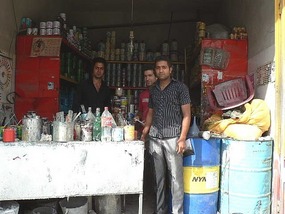
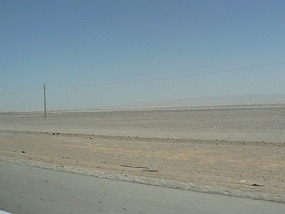
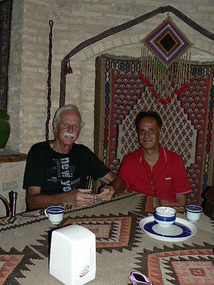
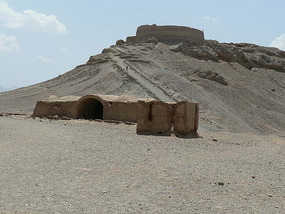
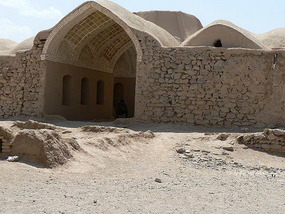
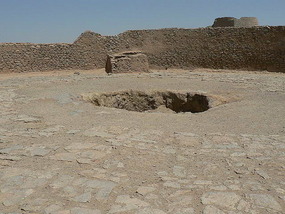
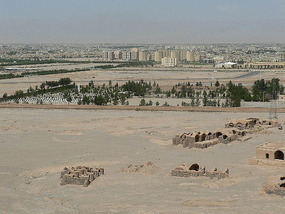
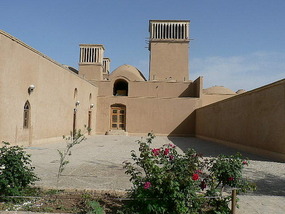
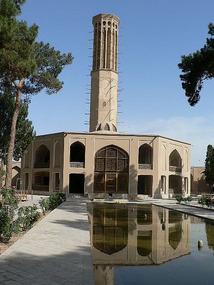
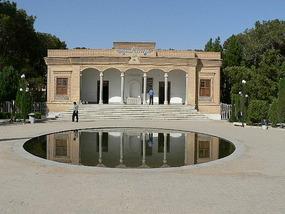
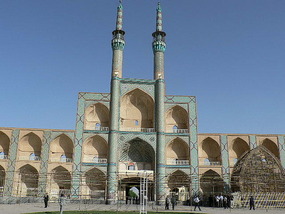
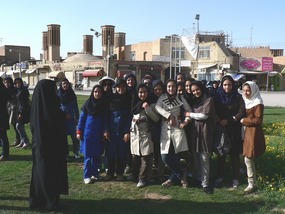
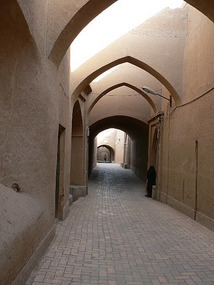
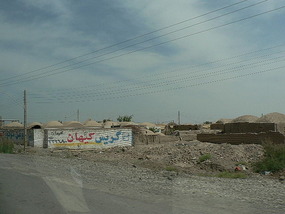






2025-05-22